Women at the University of Virginia
Women have always lived, worked and learned at the University of Virginia, but over the last century women have fundamentally transformed what once was known as a “Gentleman’s University.” The increase in access and opportunity for women has raised UVA’s academic profile and enriched the educational and social experiences of all students.
Despite Thomas Jefferson’s progressive vision of education in a newly formed nation, his plans for the University did not include women. Like many of his era, he believed that women’s education should be oriented toward the domestic, and the higher education he believed was the bedrock of democracy and civilized public life was not extended to them.
Nonetheless, women found ways to learn at the University. Before 1970, more than 15,000 women earned professional, graduate and undergraduate degrees, and a comparable number received degrees or certificates from the Nursing School. In 1970, 450 undergraduate women enrolled in the College of Arts & Sciences, transforming the University into a fully coeducational institution. Today, women constitute more than half of the student population. Women excel in the classroom, win prestigious awards and scholarships, compete in athletics and lead student organizations. The University’s alumnae are leaders and pioneers in every aspect of American life, and their contributions have reshaped a rapidly changing world.
The diverse stories of individual female students at the University trace a movement toward integration and empowerment on Grounds.
The Early Years
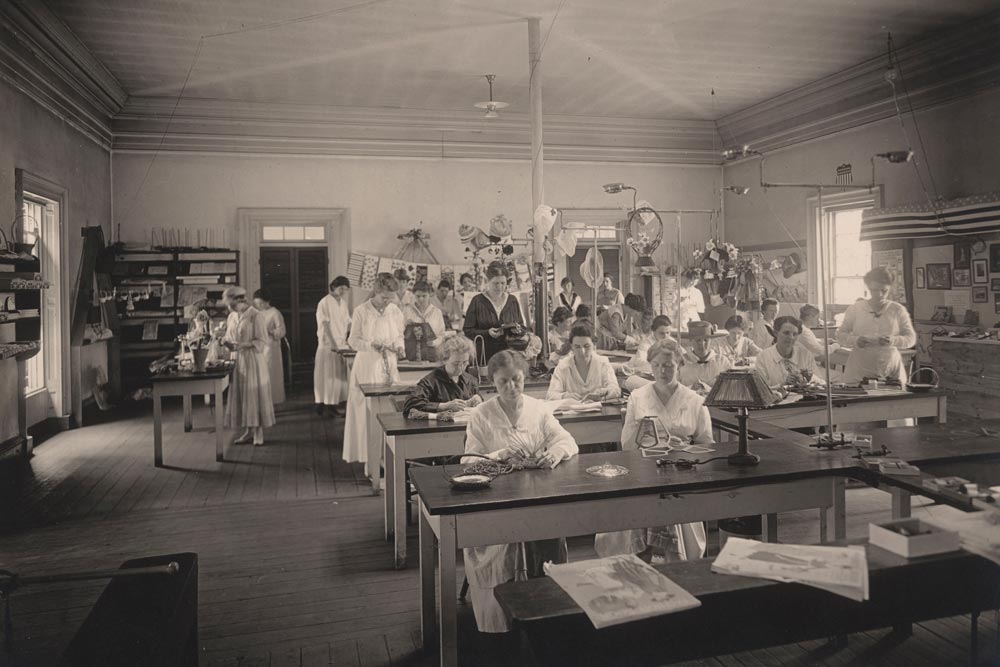
In 1880, UVA hosted the state’s first Normal School, which provided instruction for schoolteachers throughout Virginia—including 312 women.
Caroline Preston Davis applied to take the examination for a B.A. in mathematics in 1892, but the application was denied and she was awarded a certificate of proficiency instead. Two years later, Addis M. Meade (Grad 1894) received a master’s degree in mathematics. That same year, the faculty and Board of Visitors voted against admitting women under any conditions.
The School of Education established a summer school for teachers in 1907; women were admitted, but the courses offered were intended to satisfy requirements for teacher certification and did not lead to degrees. Women could also take classes in home economics, cooking and stock judging—the examination of domesticated animals for breeding purposes.

Georgia O’Keeffe attended the University for four summers, taking classes and later teaching them between 1912 and 1916.
n 1920, the same year American women won the right to vote, the Virginia General Assembly decided to admit women to graduate and professional programs at UVA. Seventeen women enrolled at UVA in those programs in the fall of 1920, including Elizabeth N. Tompkin (Law 1923), who would be the first woman admitted to the Virginia State Bar.
By the 1930s, a few wives and daughters of faculty members were accepted as degree candidates in the College of Arts & Sciences. Also during this period, Alice Jackson, an African-American woman, applied to a master’s program in French. When her application was denied because of Virginia’s racial segregation education laws, she instead earned a master’s degree at Columbia University.
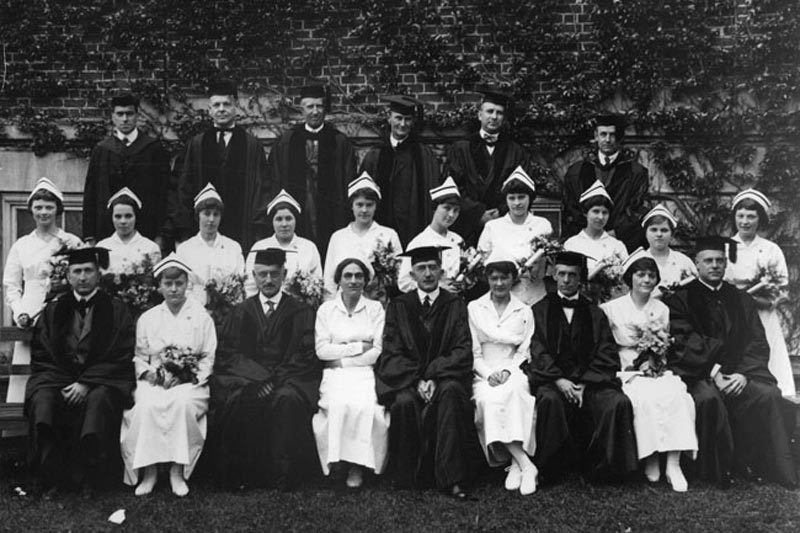
1920: The University enrolls 23 women, constituting 1% of total enrollment.
1926: At 118 enrolled, women constitute 5% of the University’s total enrollment.
Co-ordinate Education for Women
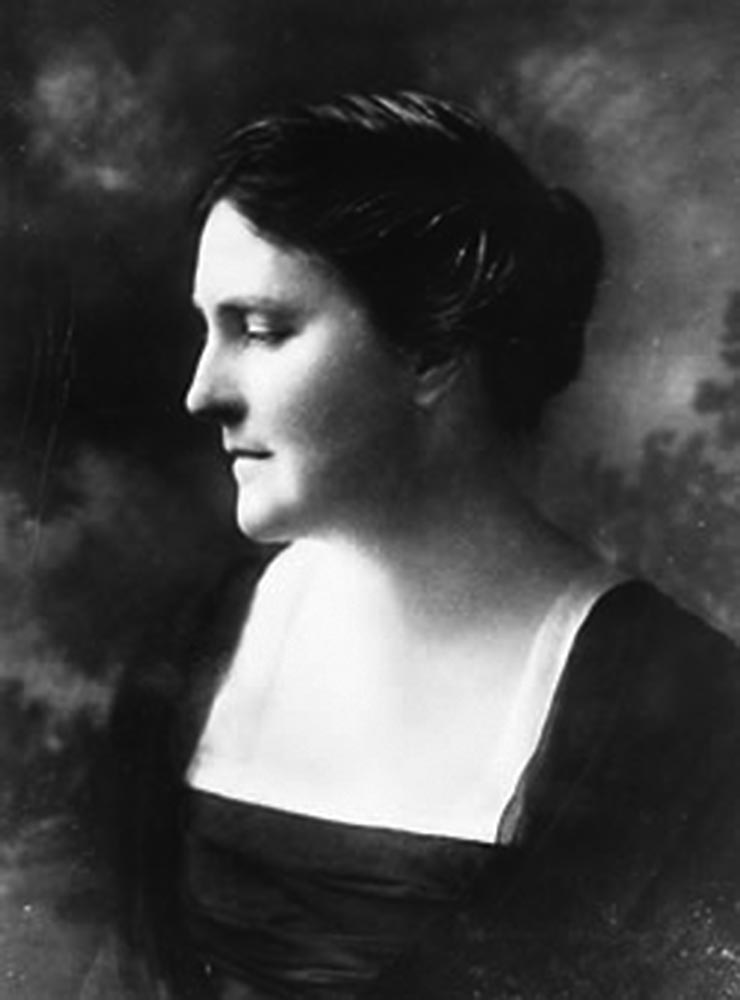
In 1910, Mary-Cooke Branch Munford lobbied the Virginia General Assembly to establish a co-ordinate women’s college. A co-ordinate women’s college would share some of UVA’s resources, but maintain separate learning environments for the sexes. The UVA faculty endorsed the bill in 1911. Five years later, the bill passed the state senate, but failed in the House of Delegates by two votes. In 1930, the General Assembly decided that a co-ordinate college should be at least 30 miles from Charlottesville. In 1944, Mary Washington College, which was 70 miles away in Fredericksburg, Va., became the women’s liberal arts college associated with UVA.
When UVA became a fully coeducational institution, the affiliation between UVA and Mary Washington came to an end. During the early ’70s, more transfer students came from Mary Washington to UVA than from any other school.
Constance Page Daniel

Constance Page Daniel (Col 1931) had an unusual opportunity to study at Cornell. “This rich woman came by my father’s office one day and said she had an interest in sending Southern women to Northern schools,” says Daniel. Her father was mathematics professor James Morris Page, dean of the faculty, and Daniel had grown up on McCormick Road in the heart of the University, but she moved north and studied at Cornell until “the [stock market] crash came and there was no more money.”
When Daniel returned to Charlottesville, her father said, “We’re going to get you to be the first woman to graduate in the regular winter school.” At the time, women could attend summer classes and study nursing or education. There were female graduate students, but undergraduate women in the College of Arts & Sciences were uncommon.
When reflecting on the news that more than half of the students currently at the University are women, Daniel says, “I’m glad my father’s not here to see that. He thought women at the University were anathema.” She laughs. “And I was the worst of all.”
Growing up on Grounds, Daniel’s family had often hosted Sunday night dinner for students. She’d gone to dances at Mad Bowl and attended fraternity parties. “If you were a woman and could breathe, you usually had four or five men following ‘round behind you,” says Daniel. “So my social life was more than anyone could expect.”
Daniel’s experience in UVA classrooms was less hospitable than her time as simply a faculty daughter. “When I’d walk into a classroom, the students would all stomp,” Daniel says. “It was their signal of derision. They didn’t want coeds at the University and I was a woman, so I had no business there. And if I dared to answer a question or make a comment, they’d stomp again. So I was stomped my whole way through school.”
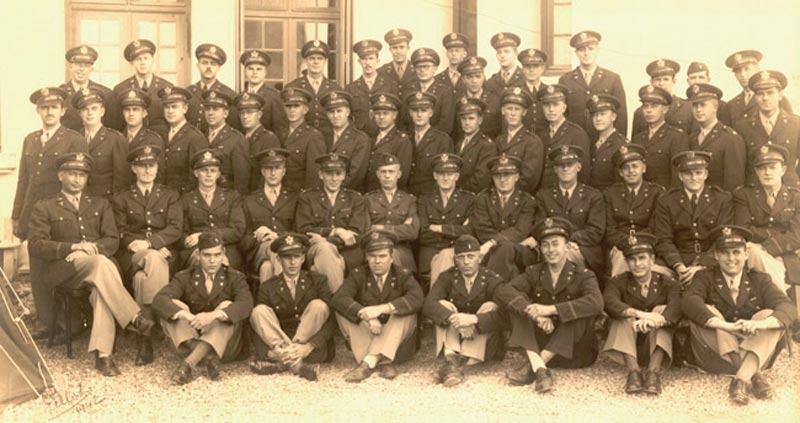
Margaret Sutherland Coleman
argaret Sutherland Coleman (Educ ’49) came to UVA from Atlanta when her husband, James Coleman Jr. (Law ’51), began Law School. As undergraduates, women could only attend classes in the education and nursing schools, so Coleman had to make a decision. “I had two choices: teaching or nursing. I chose teaching and I loved it.
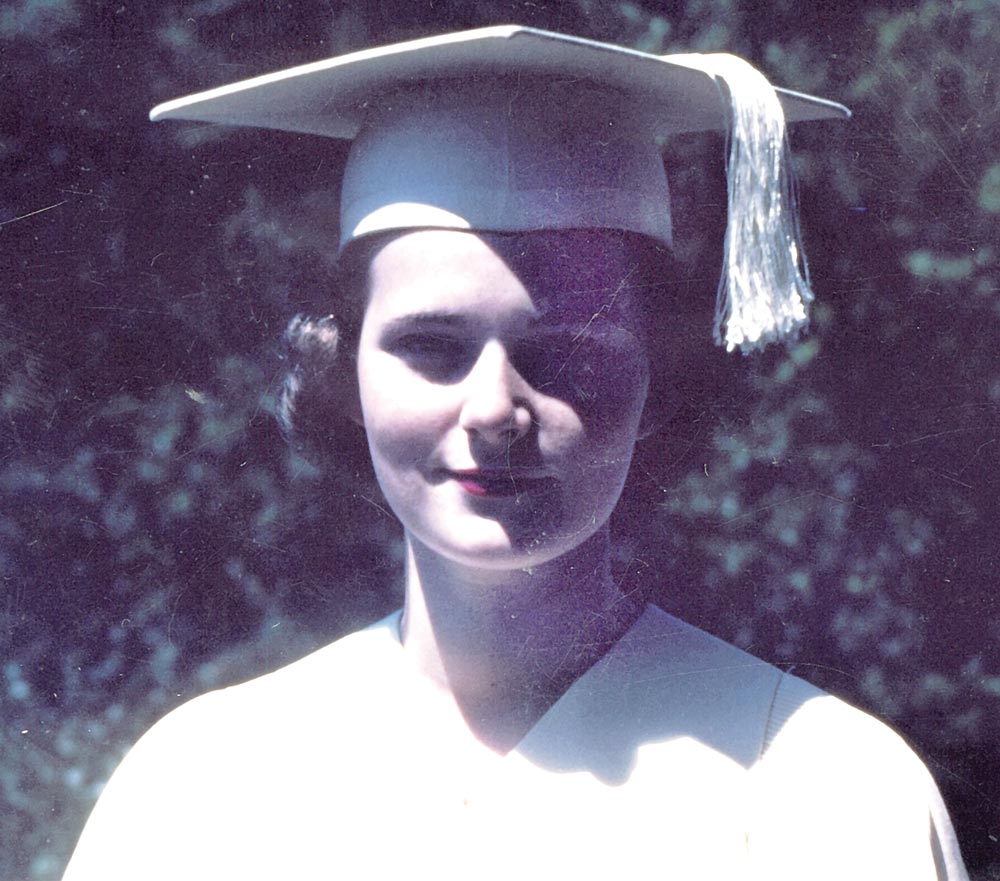
“I just felt like everything about Virginia was topnotch,” says Coleman. She participated in social activities with her husband’s law class, which was already coeducational, and befriended women who were law students. With World War II only just ended, Coleman remembers the late ‘40s as a particularly serious time at the University, when the newly returned soldiers were catching up on their studies. “We were studying a whole lot harder than people are studying now,” she says. “We were all coming back to an empty world. It took a lot of working and caring to make it worthwhile to win that war.”
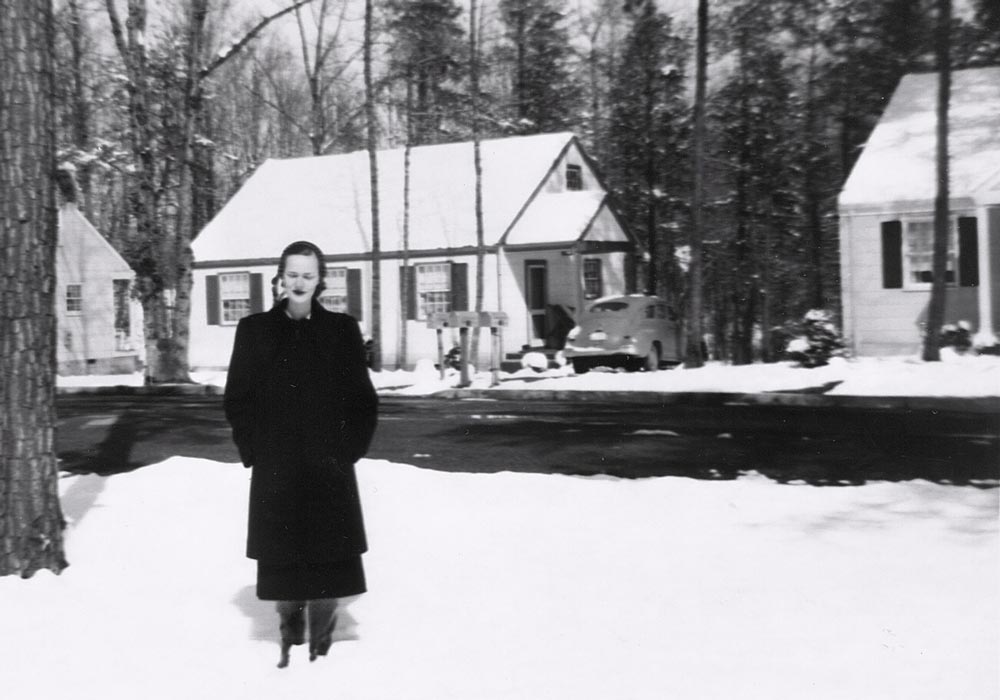
The School of Education
Established in 1905, the Curry Memorial School of Education first admitted women in 1920; by 1922, five women earned degrees from the school in a class of eight students. From that time on, women constituted the majority of the student body. Indeed, more than half of the degrees conferred on women from UVA between 1920 and 1970 were from the Curry School.
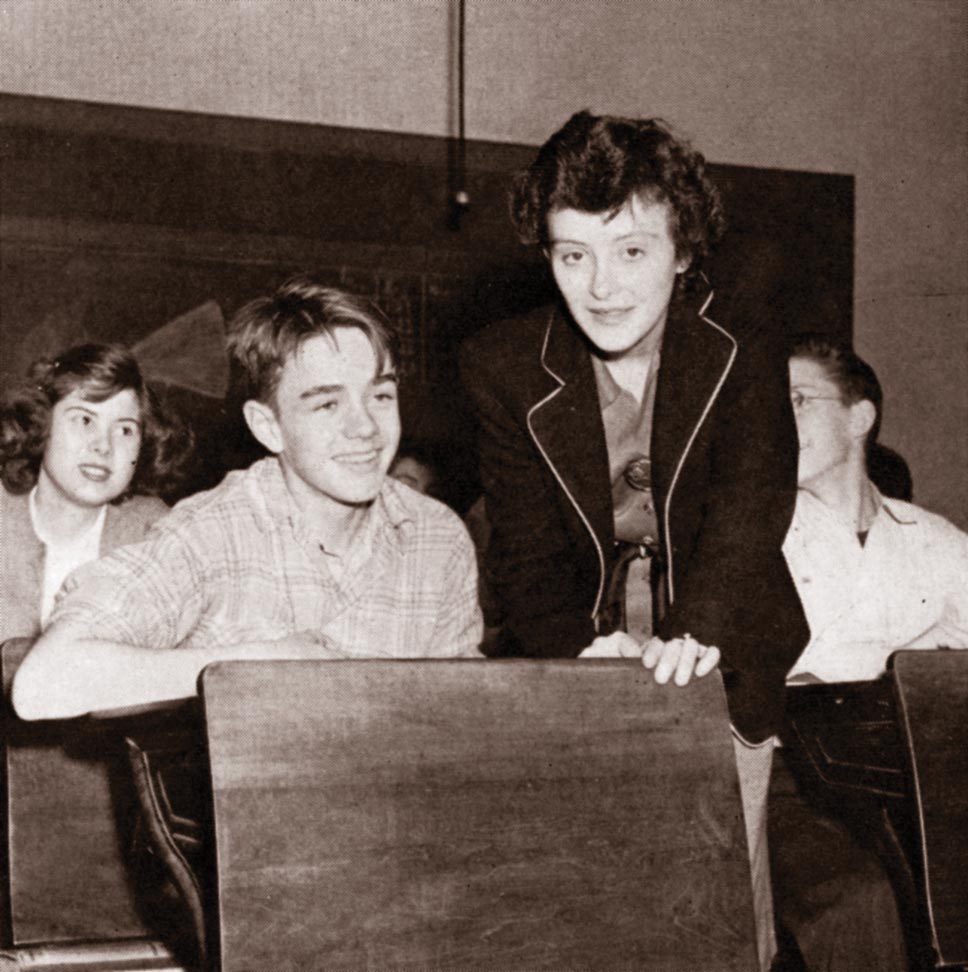
Janet Blakeman
“It was a different time,” says Janet Blakeman (Law ‘57), a New York native who attended the Law School in the ‘50s. When she lived in a house on Rutledge Avenue that she shared with two other female students, the dean of women was concerned that her housemate with a private entrance might appear to be doing something unto-ward. “I remember being called into the dean’s office and asked if men were visiting the house late at night!”
Blakeman, who went to Wellesley College, came to UVA having never been to Virginia. “I was looking for law schools that had some female students,” she said. “Virginia sounded like a nice place. I took the train. I thought it was beautiful.”
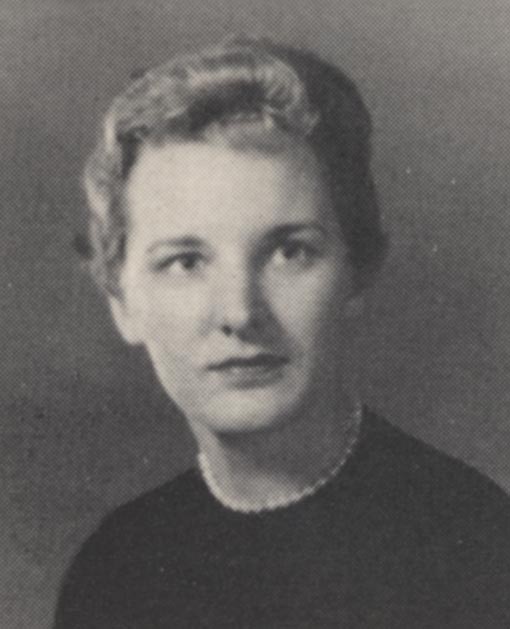
It was just after the Korean War, and Blakeman found herself attending the school with a number of veterans. Her class of about 150 students included only one other woman. In a field still dominated by men, they experienced their share of discrimination.
“I remember a male classmate who said to me, ‘You’re taking the place of a man who has to support his family,’” says Blakeman.
“Most of my classmates were pretty nice to me,” she explains. “But there were some who didn’t seem to like the idea of having a woman in the class.”
However, Blakeman found a lot of happiness in her studies. “I have to say, I enjoyed being called upon, having to recite and studying in the carrels in the library.
“And we had fun,” she says. “Everyone went to the Corner, Carroll’s Tea Room and Fry’s Spring Beach Club. Married students would have parties; there were football games.”
Blakeman worked in trusts and estates law in New York for four decades. And what of that former classmate who accused her of taking another man’s job? “I saw him later,” Blakeman says. “He asked me what I was doing. I said, ‘I’m supporting my family!’”
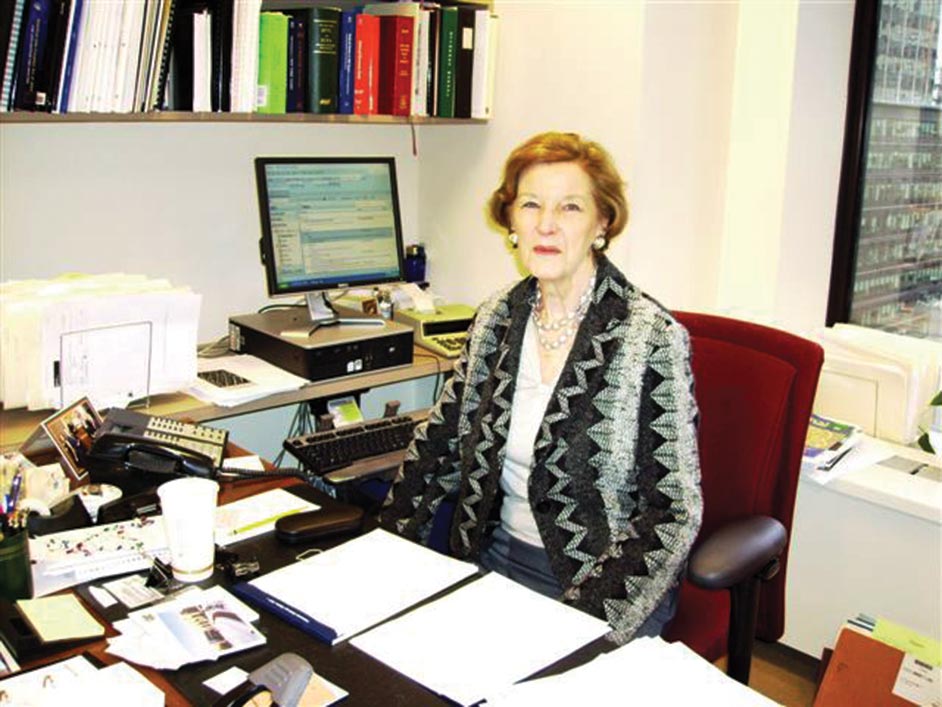
Ann Kiessling
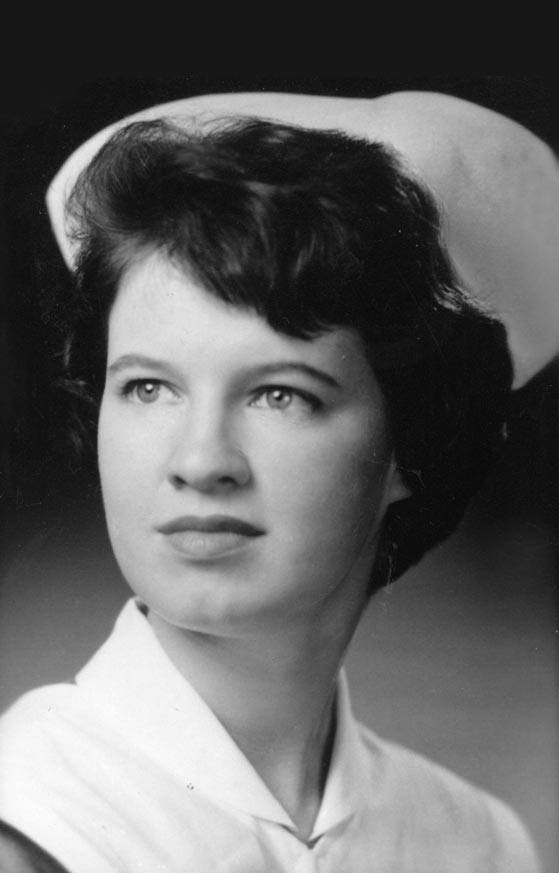
In 1960, Ann Kiessling (Nurs ‘64) was at a crossroads. She’d just graduated from high school and knew she wanted to go into science, but wasn’t quite sure how. She’d narrowed it to two possible avenues: medical school or research. She enrolled in the nursing program hoping it would help clarify her real passion.
“One of the most positive experiences was the hospital experience,” she says. “At the time, the nursing students were given a great deal of independence, and the medical staff treated us not much differently from the way they treated the med students.”

One highlight was working with Dr. William H. Muller, who was then the chairman of the department of surgery. At the time, open-heart surgery was a relatively new procedure, and he had developed one of the replacement heart valves. “I was invited to team meetings,” says Kiessling, “because I’d shown such an interest. I was interested in the logistics of how they were going to bypass the heart, how the equipment was designed, how they were going to oxygenate the patient.”
Kiessling ended up choosing research. After obtaining subsequent degrees, including a doctorate in biochemistry and biophysics, Harvard recruited her in 1985; in 1996, she founded the Bedford Stem Cell Research Foundation.
Mavis Claytor

When Mavis Claytor (Nurs ’70, ’85)—the first African American to earn a degree in the nursing school—arrived in Charlottesville, she stayed at a hotel for a month because she was unable to secure housing in the student dorms as a black student. When she ran out of money for her hotel room, she sought help from the dean of the Nursing School, Mary Lohr (Nurs ’62), who was able to help find a room in the dorms. Still, when Claytor speaks of her education at UVA, this initial hardship appears to be a minor setback. “I was so focused on getting my education that I did not pay attention to the fact that I was the only black student,” says Claytor.
She frequently returned to her hometown of Roanoke on the weekends because she missed the comforts of her home and community, but at UVA, Claytor was a driven student. Already a registered nurse, Claytor was a popular study partner because of her experience and knowledge. She was asked to join a sorority but declined.
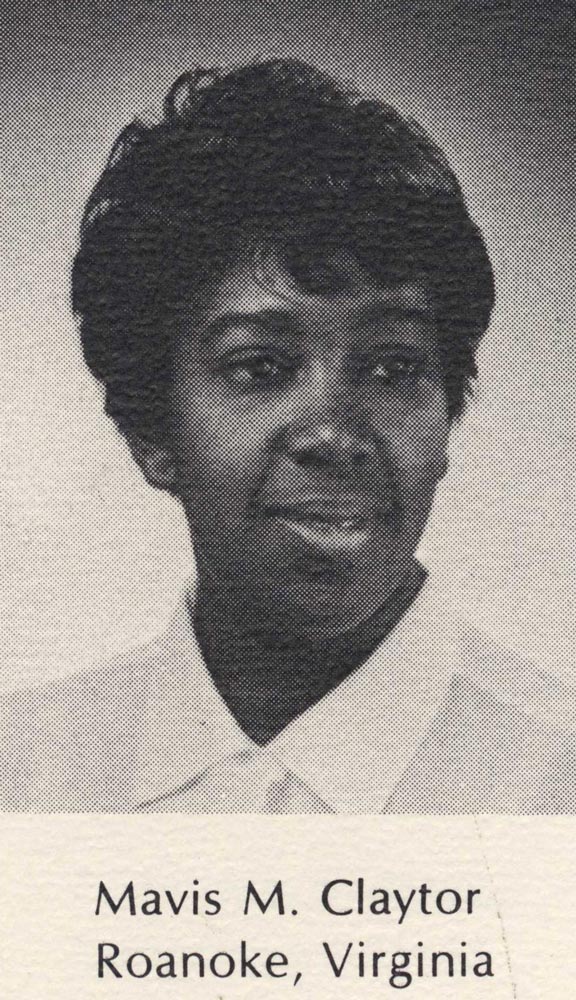
When she was 16, Claytor cared for her ailing grandmother and decided then that she wanted to become a nurse for the elderly. She worked as a licensed practical nurse in Roanoke until she was offered a scholarship at Helene Fuld Nursing College, where she became a registered nurse. She wanted to go to UVA for her bachelor’s degree because it was an accredited school, but she considered the move somewhat risky. “My family was limited financially and I knew I would just have that one opportunity, so I wanted to do the best that I could. I was determined: This is going to be it for me.”
Claytor found a mentor in Jeanne Cutler Fox (Nurs ’68), an instructor in the Nursing School who encouraged Claytor to pursue a master’s degree in nursing. At this time in the University’s history, Claytor could see more doors opening for women. “I felt that that was a good time for females to enter any program that they wanted to.” Claytor recently retired as the chief of geriatric nursing at the Veterans Affairs Medical Center in Salem, Va., after a career of 30 years.
“At UVA,” she says, “we didn’t think that much in terms of race or gender. I think we were just focused on the educational climate at UVA. We always had football games and activities that brought people together. Times were beginning to change rapidly.”
The School of Nursing
In 1901, the UVA hospital created a nurses’ training program, which granted diplomas to thousands of women over the next 50 years, but was not recognized as part of the academic offerings of the University until 1949. Nursing students initially lived in rooms in the attic of the hospital building. Patient overcrowding in the hospital and a measles outbreak resulted in the adaptation of Varsity Hall in 1914 from its initial use as an infirmary to accommodations for nursing students. Nursing students went on to live in Randall Hall, starting in 1919, and McKim Hall, which was built in 1931. The School of Nursing became an independent school of the University in 1956, with Margaret Gould Tyson the school’s first dean. Men were admitted in 1962; the first male student, Thomas Watters (Nurs ‘66), had been a U.S. Navy corpsman.
Mr. Jefferson’s Nurses by Barbara Brodie details the school’s ban on marriage for nursing students. Even into the mid-‘50s, faculty would vote on whether to allow a nursing student to marry without leaving the program.
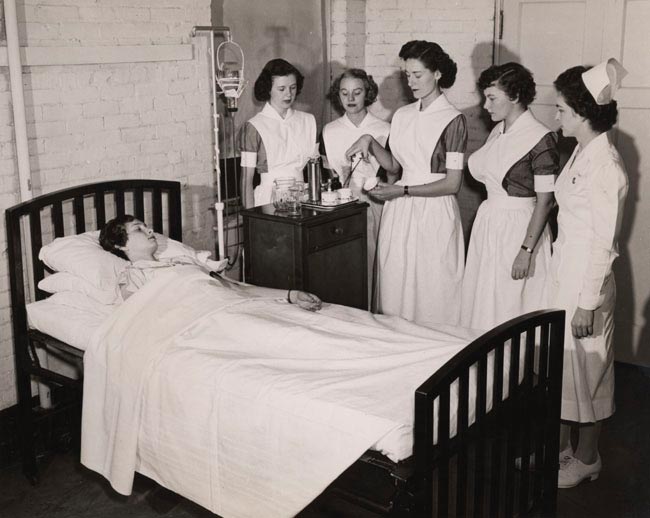
Full Coeducation
In the mid-‘60s, members of the Virginia General Assembly and several state commissions encouraged the University to consider full coeducation. African Americans had fought for access to the University and, starting in the late 1950s, UVA had begun admitting small numbers of African-American students.
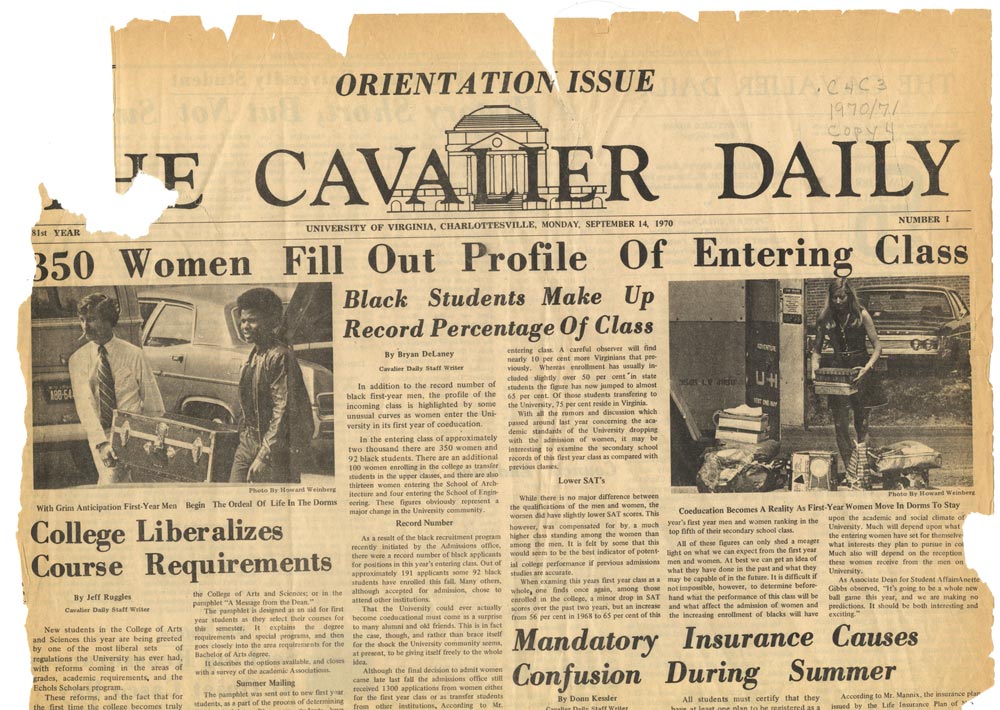
In early 1969, the Board of Visitors voted to gradually provide greater access for women to all parts of the University. During a transitional period of one year, they planned to admit the qualified wives and daughters of staff members. The University proposed increasing the number of female students over 10 years and capping their number at 35 percent.
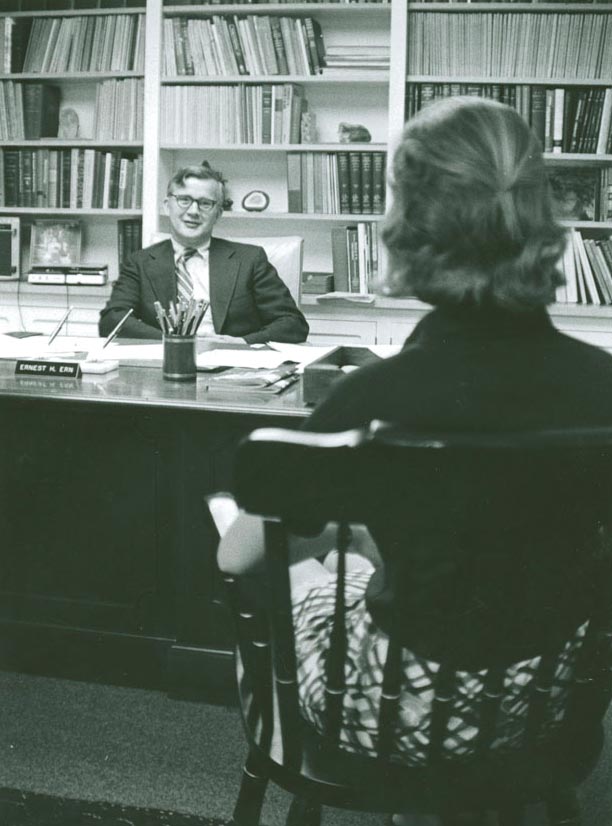
Mere months later, four women—Virginia Anne Scott, Nancy Jaffe, Nancy L. Anderson and Jo Anne Kirstein—represented by American Civil Liberties Union lawyer John Lowe (Law ‘67) brought a lawsuit against the University. The plaintiffs claimed that the University “severely discriminates against women in their admissions policies” and petitioned for the College to admit women.
The court mandated full coeducation within three years. The court also granted the plaintiffs a temporary injunction to study in the College of Arts & Sciences in the fall of 1969 rather than having to wait an additional year. Virginia Anne Scott enrolled that semester.
In September 1970, 450 undergraduate women, 350 of whom were first-years, entered the College. Ernest Ern, admission dean during those transitional years, was quoted as saying that the Office of Admission intentionally selected exceedingly strong women who displayed academic, leadership and social promise.

In 1971, 550 new female students arrived on Grounds. The fall of 1972, students were admitted without regard to gender. These women gained entry into UVA’s organizations, societies and leadership positions, including the IMPs, the Raven Society, the Cavalier Daily and the Honor Committee. In 1972, Cynthia Goodrich Kuhn (Col ‘73) moved into 28 East Lawn and became the first female Lawn resident.
Student Life Before 1970
- 1921: Adelaide Simpson becomes first dean of women.
- 1921: The Women Students Self-Government Association is created.
- 1927: Mary Jeffcott Hamblin becomes dean of women.
- 1928: The Co-Ed Room on the West Range provides a women-only space to gather for meals or other social events.
- 1934: Roberta Hollingsworth (Grad ‘33) becomes dean of women.
- 1951: Mary Munford Hall is the first dormitory built specifically for women.
- 1967: Mary Whitney becomes dean of women.
- 1970: Annette Gibbs, associate dean of student affairs, helps with the transition to full coeducation.
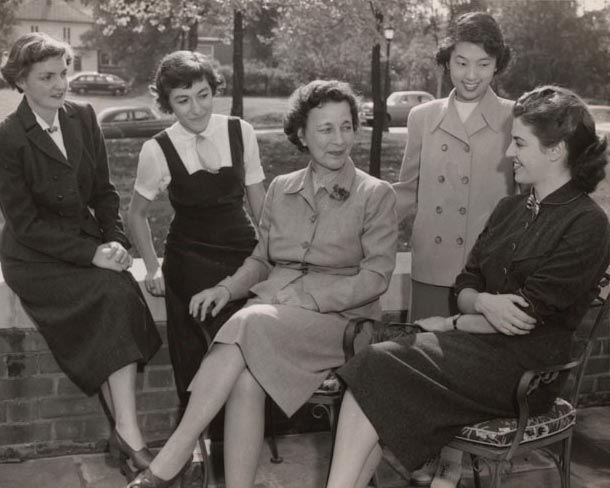
A history of female professors at UVA
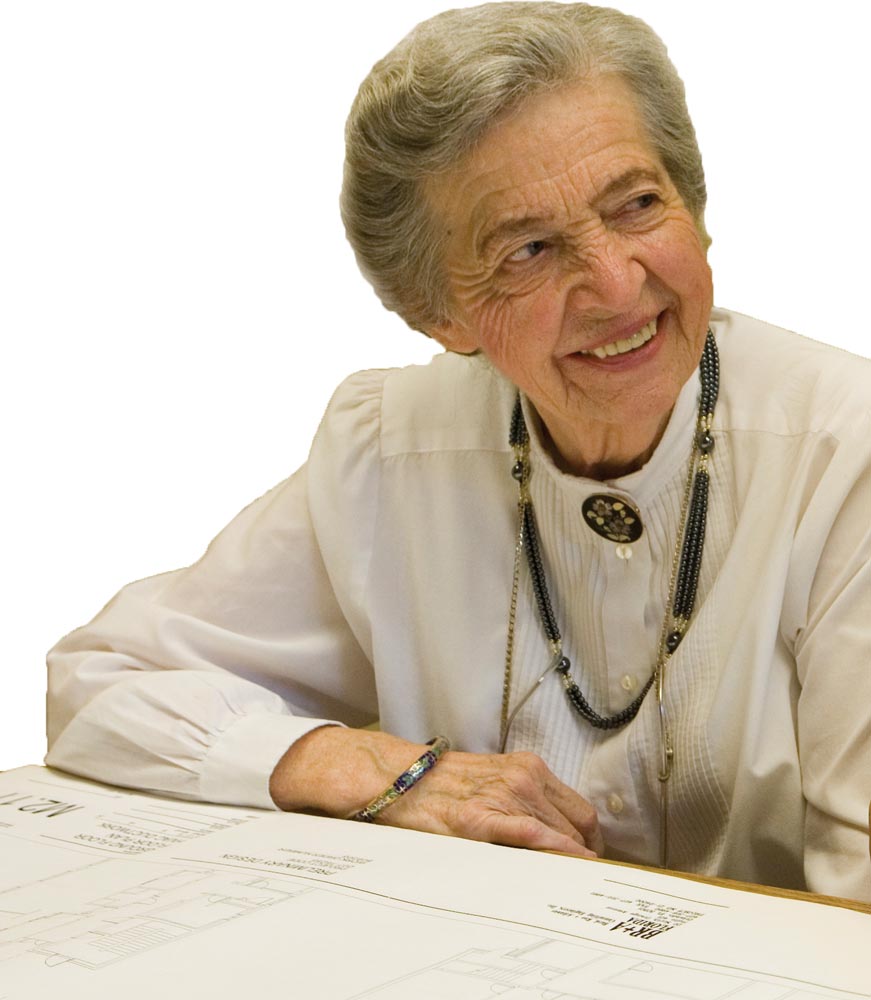
1963: First Female Full Professor
Doris Kuhlmann-Wilsdorf joins the University in 1963, becoming the first female full professor, and continues as a professor of applied science for 40 years.
Previously, she’d worked as a lecturer in physics in South Africa and was a professor of metallurgical engineering in Philadelphia. Kuhlmann-Wilsdorf was a member of the National Academy of Engineering, wrote more than 300 scientific papers and started two companies, HiPerCon, for high-performance electrical contacts; and Kuhlmann-Wilsdorf Motors.
1973: First Female Tenured Law Faculty
Lillian BeVier joins the Law School faculty in 1973, later saying, “I must have seemed like a very strange person to the people in Charlottesville—I was a woman, I wanted to be a law professor, I was divorced, I had two kids, I drove a ’68 Chevy Camaro convertible—but they were so nice to me.” She retired in 2010.
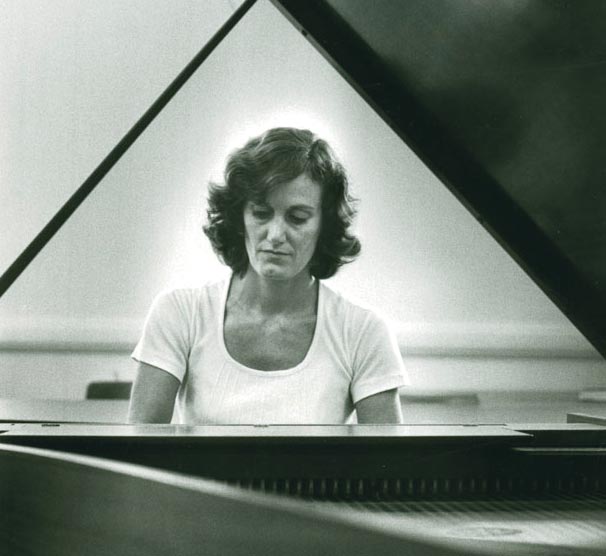
1979
There are 206 female faculty members and 1,171 male faculty members at the University.
2008
There are 688 female faculty members and 1,483 male faculty members at the University.

Holly Smith
Holly Smith (Col ’72) was in her sophomore year at Sweet Briar College when she heard that UVA had opened its doors to female undergraduates. She applied and was happy when she got in. “Apparently Dean of Admission Ernest Ern purposely chose female applicants who were active and aggressive. It was fair to say I fit that bill,” says Smith.
During the summer before she arrived at UVA, Smith discovered Our Bodies, Ourselves, a book significant to the women’s movement of the ’60s and ’70s. “It explained that women were equal to men and should be treated equally,” says Smith. “With my outlook on life rearranged, I arrived in Charlottesville in September of 1970 ready to do battle in the cause of making sure that women were given equal treatment at the University.”
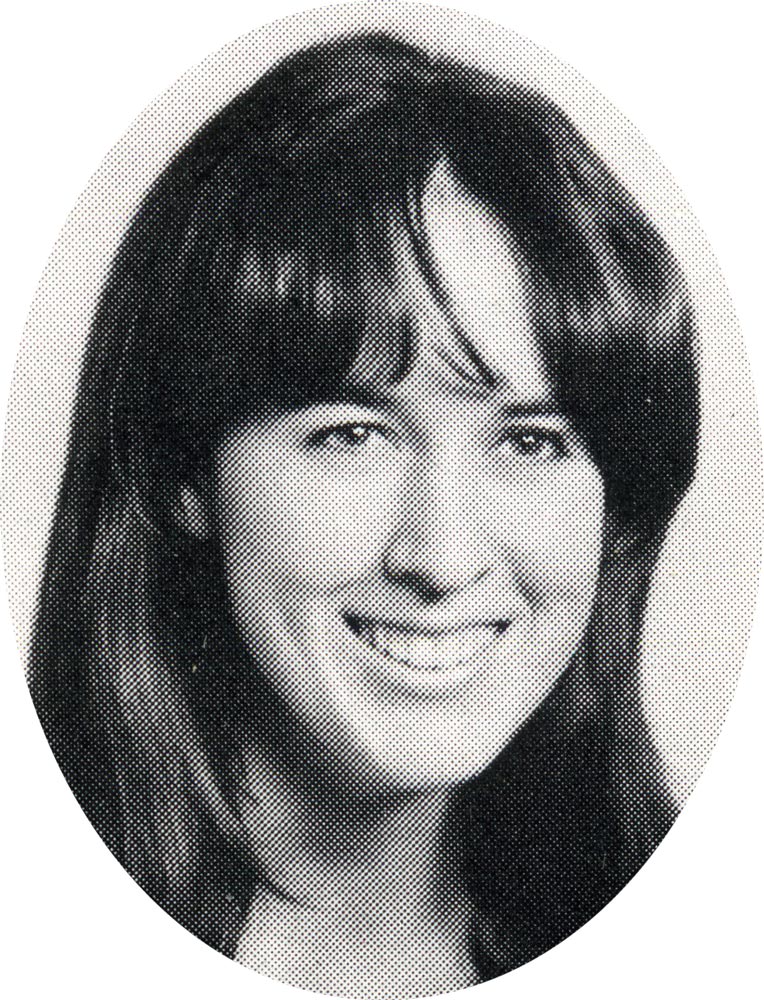
Times were turbulent. Smith remembers protests against the Vietnam War, but she found that male students were generally pleased to have women at the University. “There was a tradition, though, that no male student would sit next to a female student in class unless all the other seats were taken. Often the men were just shy, not resentful.”
Perhaps because the University had to quickly comply with a 1969 court order to admit female undergraduates, Smith noticed some areas of student life where the University did not adequately provide for women’s needs. She joined the staff of the Cavalier Daily and wrote about UVA’s transition into a fully coeducational institution. She covered topics such as the development of health care for women on Grounds and attitudes toward women’s athletics. In 1970, women seeking birth control were directed by Student Health officials to get care from physicians in the city of Charlottesville. Athletic scholarships were awarded only to men.
Smith also tackled the controversy about opening up Lawn rooms to women. In an interview, Smith asked Ralph Main, director of housing, why women couldn’t live on the Lawn. “Bathrooms,” he told her.
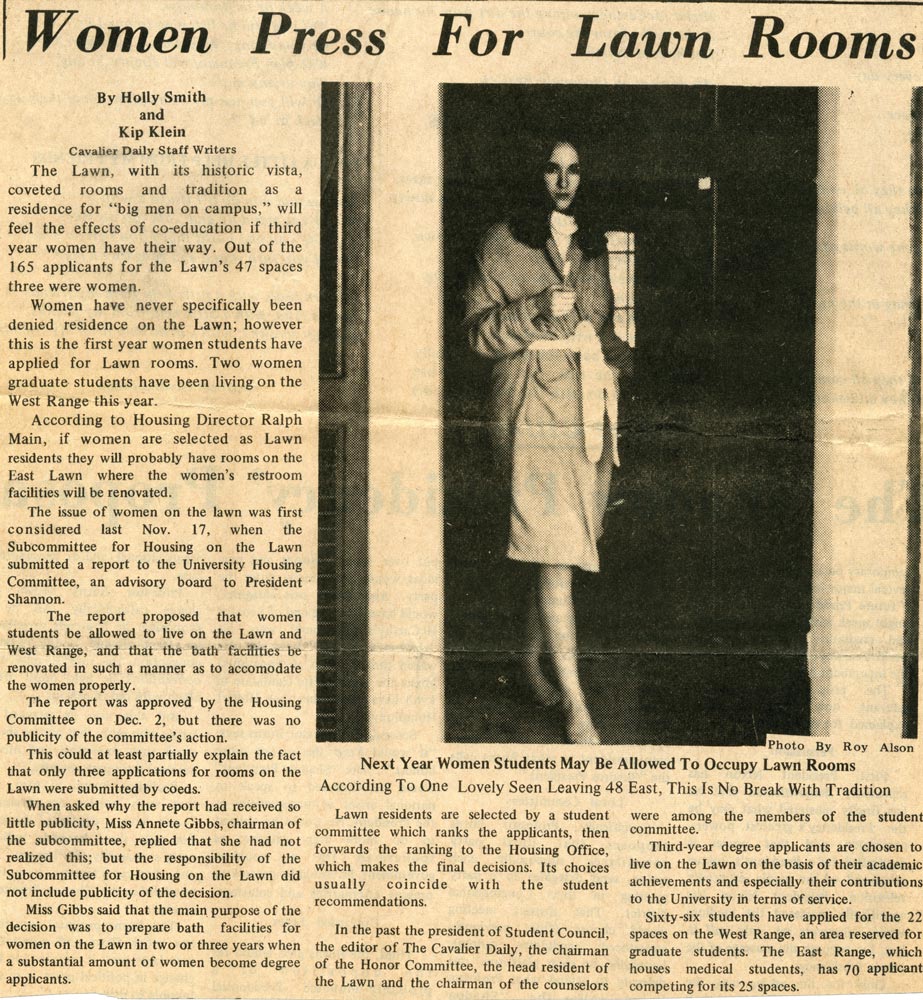
Valerie Smith Kirkman
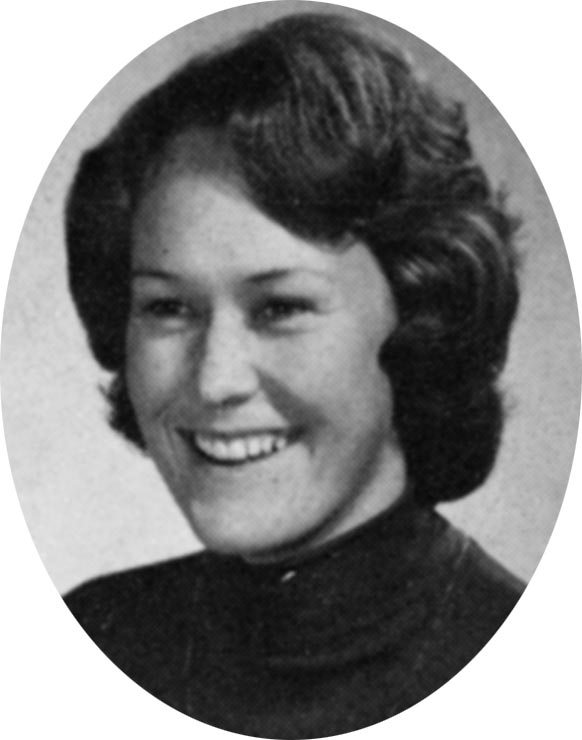
Although Valerie Smith Kirkman (Nurs ’75) and her sister, Holly Smith, were both students in the early ’70s, they had very different undergraduate experiences. While Smith ran into some speed bumps as one of the first female undergraduates, Kirkman says that when she arrived two years later, women had already assimilated into University culture. “I think the transition happened pretty quickly,” Kirkman says. “Because I came in the fall of ’72, women had already been there long enough and the men were used to women being around.”
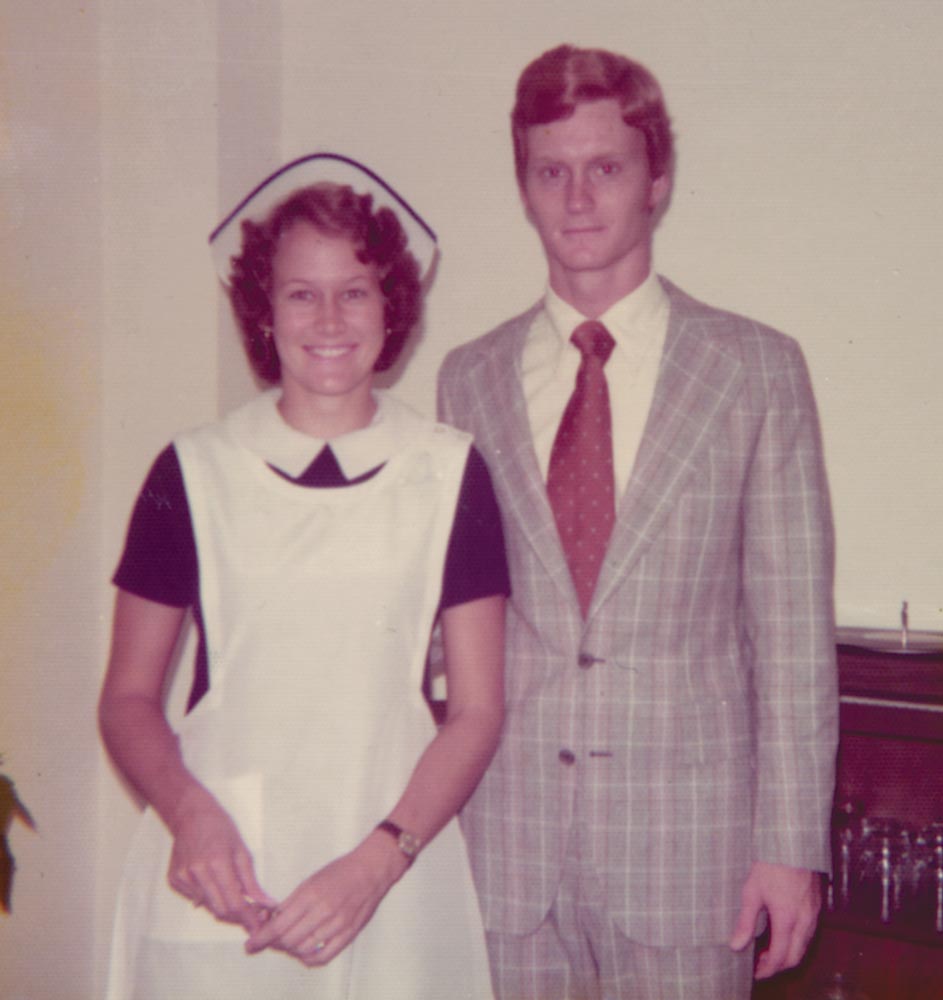
She says her fellow nursing students were career-oriented like her and that nursing was a career that was flexible enough to fit several life stages. “I loved nursing because it allowed me to work part time when we were raising kids, or to take a break and go back into it.”
During her third year, Kirkman was a cheerleader and remembers how the men from the fraternities traveled to nearby universities to pick up dates to bring to football games and big weekends. “One thing I noticed,” she says, “is that the girls who were from UVA would wear bell-bottom blue jeans, while girls who were imports from schools like Sweet Briar wore plaid skirts and matching sweaters.”
Kirkman says that the women’s movement wasn’t a major issue on Grounds. “We knew that women could do whatever they wanted to do,” she says. “It was just an attitude of knowing that.”

Sandra Lewis
“My reasons for choosing UVA were not quite the usual ones for selecting a college,” laughs Sandra Lewis (Col ’72). When she finished high school, the College of Arts & Sciences did not accept women as undergraduates. Born and raised in Charlottesville, she met her husband-to-be, Lemuel Lewis (Col ’69, GSBA ’72), while he was a UVA student. She attended Fisk University in Nashville while Lemuel was at UVA. They married a year later and she enrolled at UVA in 1969 as a second-year “day student.” Lewis was later accepted as a regular third-year student in 1970 with the arrival of full coeducation.
“I did not encounter any resistance from anyone that I can recall,” says Lewis. “I found that the male students were for the most part very gentlemanly.” Her perspective might have been different had she been single, she says. Lewis lived in married student housing and socialized with other married couples.
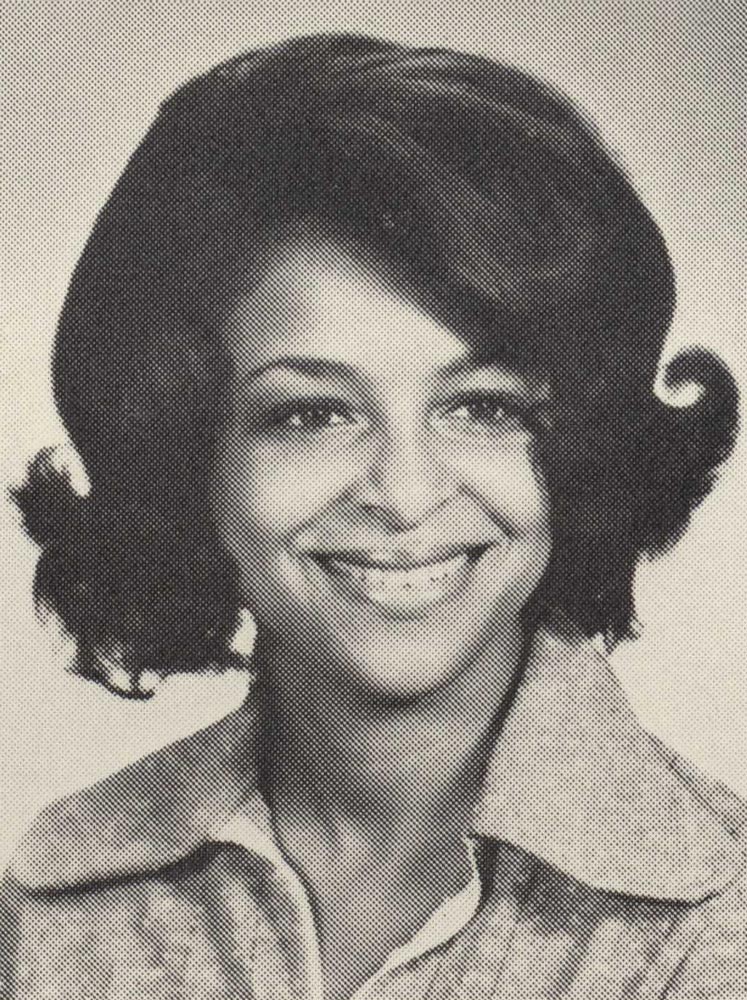
Lewis describes a somewhat polarized campus. “I was at UVA when the Vietnam War was going on,” she says. “We had very traditional, necktie-wearing students and then we had the ’60s radicals. UVA had its set of protestors, so there was a little more going on than just your football games and frat parties. It was a campus that was in an uproar.
“The only negative experience was that even though there were African Americans attending at the time, I don’t think there was a lot of integration of the group into the campus life,” she says.
Thinking back, she describes graduation as an especially meaningful day. Her father worked as a pharmacy assistant in the UVA hospital and her grandfather had been a groundskeeper for the University. “Even though they were not part of the academic setting, they still had pride in the school,” she says. “My father had grown up seeing all-white football games and students, so him being there made it very special for me, knowing how he felt about his daughter graduating from a school where he was in the shadows.”
Tanya Lewis
Of the many reasons a teenager might pick one university over another, Tanya Lewis (Col ’00) had a special one for attending UVA. Both of her parents were alumni. Her father was among the first African Americans to graduate from the Darden business school, and her mother, Sandra Lewis (Col ’72), was the first African-American woman to graduate from the College of Arts & Sciences. “I was very familiar with the campus and the history and the reputation,” says Lewis.

“It was enlightening,” she says of her time at the University. “I came from a world in which I was sheltered—I’m an only child, so I had to do the roommate thing.” She was also torn about her decision to major in Economics and follow in her father’s footsteps. “I wanted to be sure that I was creating my own future,” says Lewis, “and for the first time I had to make a major decision independently of what my parents saw for me. I knew that fewer women chose economics as a major, which was really more motivation for me to stick to my own plan. Fortunately, my parents wholeheartedly supported my decision.”
If she has one regret, it’s that she was never able to strike the perfect balance between schoolwork and extracurricular activities. “I was strictly academic,” she says. “I wish I could have been more involved.”
Lewis got a B.A. in economics at UVA, and went on to spend six years in banking, then worked in real estate. Now she’s at Georgia State University, taking the prerequisite classes needed to apply to nursing school. “I’ve always been more of a people person,” she said. “I like the sales stuff, but not the highly competitive cut-throat sales that I was doing. I’m trying to bridge the business side of myself with the more nurturing side.”
“I can’t believe it’s been 10 years,” she says, thinking back. “The friends I have now are pretty much the friends I made in college.” How did she feel on graduation day, continuing a legacy started by her parents? Lewis laughs and says, “Relieved.”
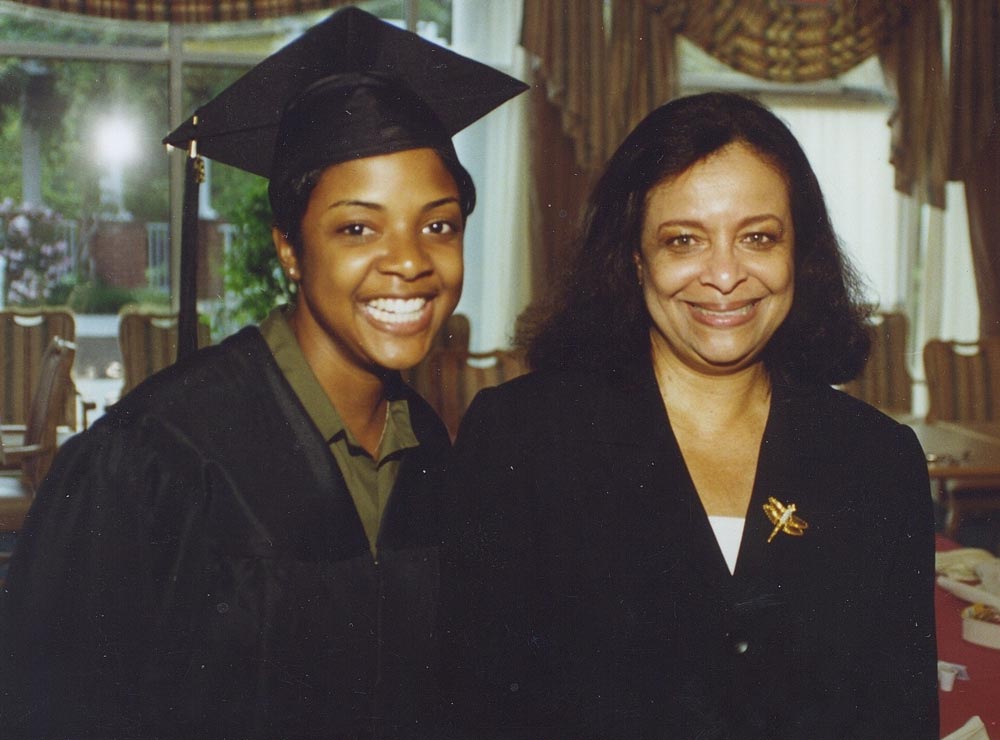
Women’s Athletics
Before 1970, there wasn’t a women’s athletics program at the University, yet UVA still boasted several notable female athletes, including Mary Slaughter (Educ ’54), who lettered in tennis in the early ’50s, and Mary Brundage (Nurs ’67), who competed alongside male swimmers on the 1966 varsity swim team.
In 1972, Title IX became law. In addition to ensuring equal job opportunities for women, it mandated that educational institutions provide equal opportunities and funding to men’s and women’s athletics programs. In 1977, UVA awarded its first athletics scholarship to a woman.
Today, the Virginia Athletics Foundation provides more than $4 million in scholarships to women athletes.
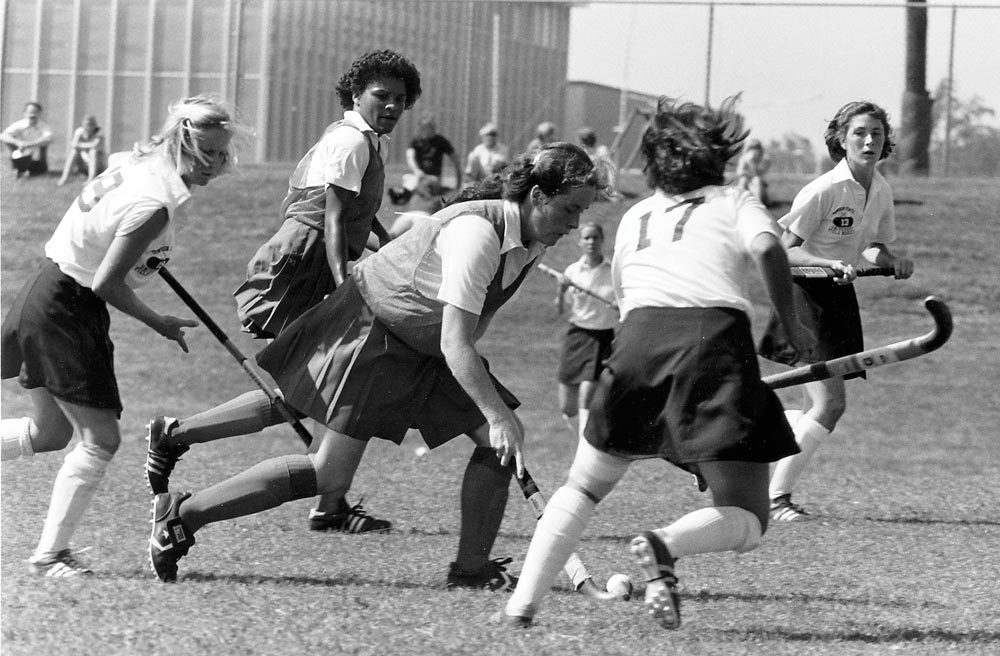
Jill Haworth Jones
Some days during cross country practice, Jill Haworth Jones (Col ’83) would hop a fence, cross a cow pasture, pass the mansion on the hill and run around the back of the present-day Birdwood Golf Course. Other days, she would run near the polo fields and loop around. “The dirt paths on O Hill, the athletic fields—sometimes we’d run around the Corner,” she says. She and the other members of the women’s cross country team ran upward of 70 miles a week.
Jones and her teammates made UVA history when they won national championships in 1981 and 1982. “The first year was exciting, but the second year might have been an even sweeter victory,” says Jones. “The second year, two of our best athletes, Lisa Welch (Educ ’85) and Aileen O’Connor (Col ’83), couldn’t compete due to injury, and the coach at Stanford was quoted in a newspaper as saying that we should mail him the trophy. But we won.”
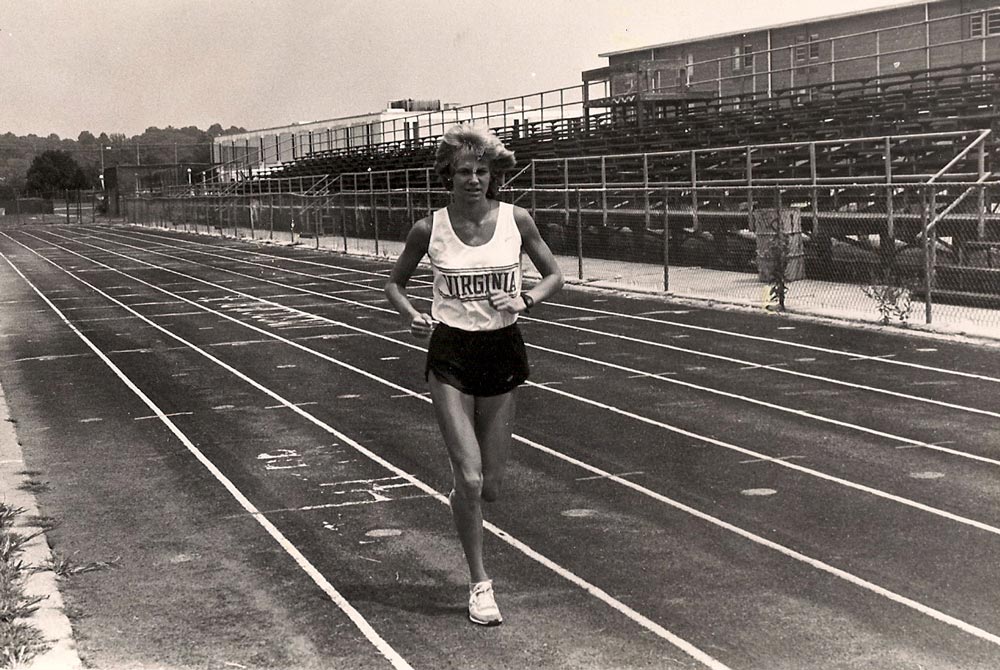
Jones was among the first women to be offered athletic scholarships at the University and an early beneficiary of Title IX. “I know it opened up a huge door for me personally. It has changed a lot of women’s lives,” says Jones.
Jane Miller, senior associate athletics director of programs, concurs that Title IX “clearly elevated our women’s athletics to a higher level with necessary resources to compete at the highest levels.” UVA introduced women’s varsity sports in 1973, awarded the first scholarship to a female student-athlete in 1977, and by 1980 was supporting 10 women’s varsity sports. Currently, there are 13 women’s sports. “In the last 10 years, we’ve reaped the benefits of fully funded scholarships for our female student-athletes. In 2009-10, 12 of our teams participated in NCAA championships. The rowing team won its first national championship in the spring,” says Miller.
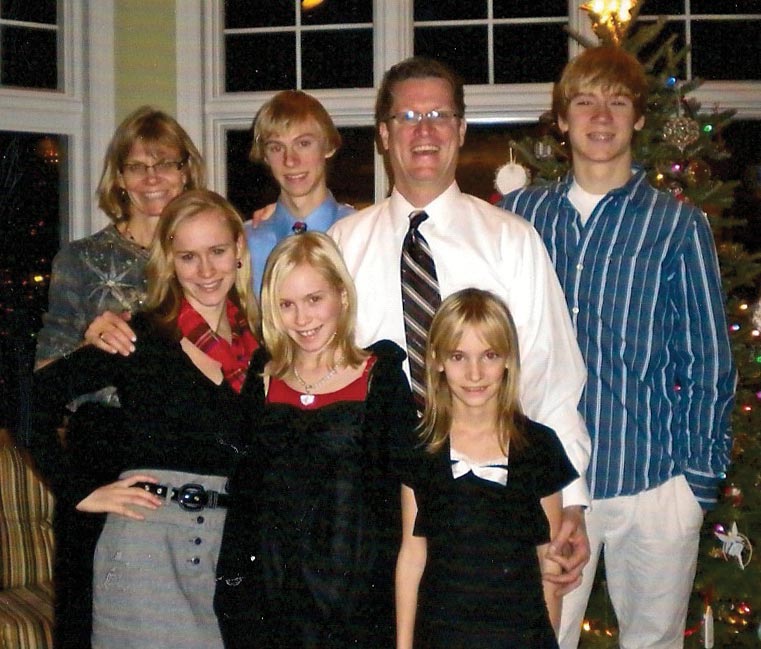
What was it like to be a pioneering female student-athlete? Jones says that she had little time to participate in social activities. “We were either studying or running,” she says. “The cross country team was my sorority, a very close-knit group. Head coach Dennis Craddock and cross country coach Martin Smith kept us very busy.”
Jones was a nine-time All-American and competed at the national level in track and cross country. She was twice a finalist for the 1,500 meters outdoors at the Olympic trials.
Nancy Andrews
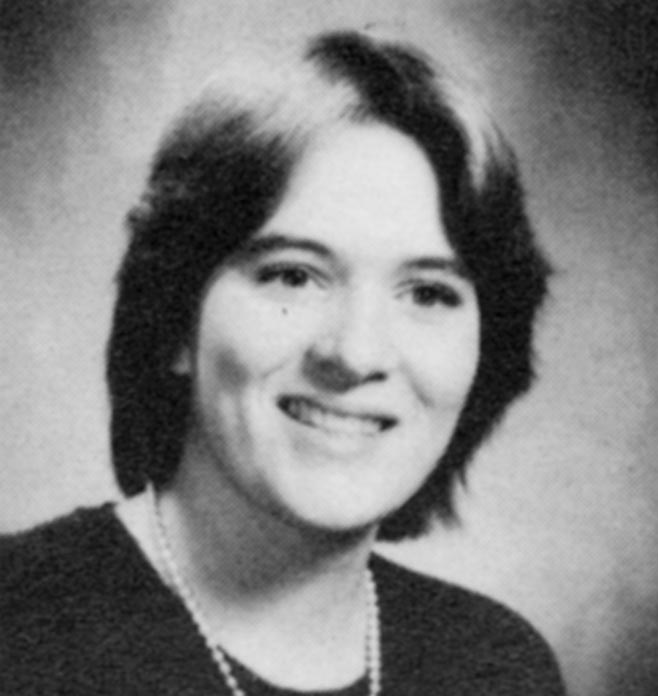
Nancy Andrews (Col ’86) is an award-winning photographer and managing editor for digital media at the Detroit Free Press. She’s won three Emmys for her video production work and published two books of photography. But before all that, she was a young woman growing up on a small farm in Caroline County, Va., thinking about college, and entranced by the idea of UVA.
“I loved everything it stood for,” she says. “I read all about Thomas Jefferson, and I loved the philosophy of the place.”
She enrolled and got a degree in economics, but cites the Cavalier Daily as her real major, where she served at various points as the photographer, photo editor and managing editor. It was a trial by fire experience, she says, and set the groundwork for her future career as a successful photographer and journalist. “It was one of the hardest jobs I’ve ever done,” she says of putting out a student-run, five-days-a-week publication. “We ran that newspaper.”
Andrews recalls her experience at UVA as an enriching, multi-faceted and exciting time. And an especially pivotal time—she came out as a lesbian.
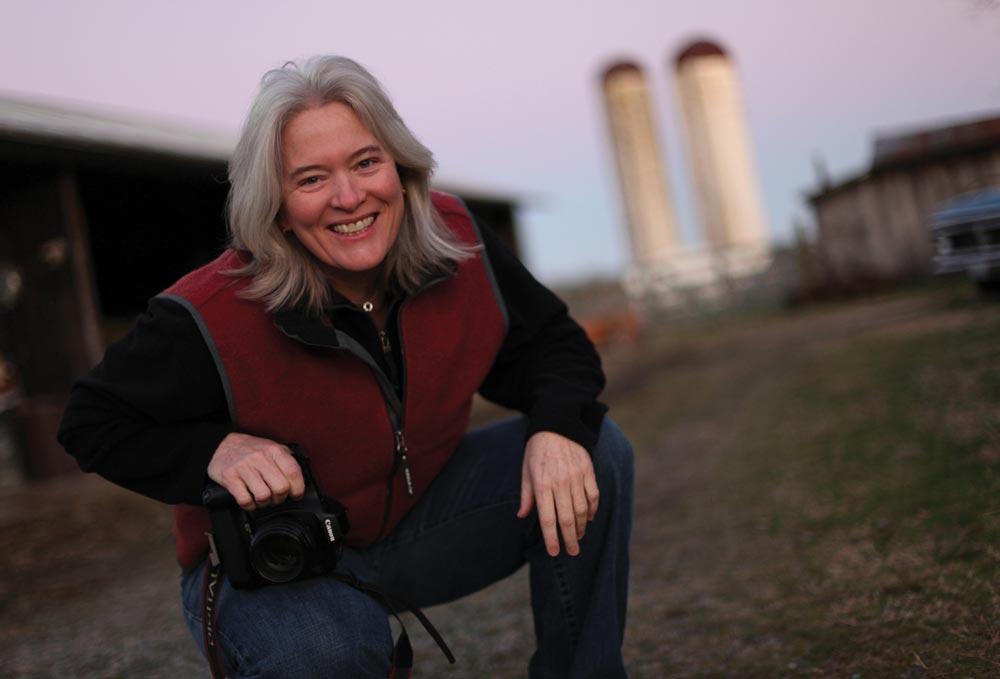
“I knew it was right,” she says. “I had learned this about myself. And I knew there were people that wouldn’t agree.” She explains that it was the mid-’80s, a different landscape in terms of the acceptance of gay people, and that some of the reactions she got were perhaps a reflection of her own feelings, which were a little fearful. However, she claims that the overriding outcome was support. “Did my friends change as a result? Absolutely not. I can’t really say anything negative happened.”
After stints at a Fredericksburg, Va., paper and the Washington Post, she moved to the Detroit Free Press. In addition to her newspaper work, she’s published a book of photography Family: A Portrait of Gay and Lesbian America and one about a friend of hers who had Alzheimer’s, which contains photography and spoken testimony called Partial View: An Alzheimer’s Journal.
After graduating, Andrews says she heard about some anti-gay sentiment at UVA, so she asked a former teacher if she could visit and talk to students.
“Nothing like talking to 400 people and telling them you’re gay,” says Andrews. Though she struggled through the talk—“I don’t remember what I said, I just remember that I talked about it”—the students were receptive and asked thoughtful questions. “I think it was good for the students. They’re all part of moving things forward.”
Women’s Studies at UVA
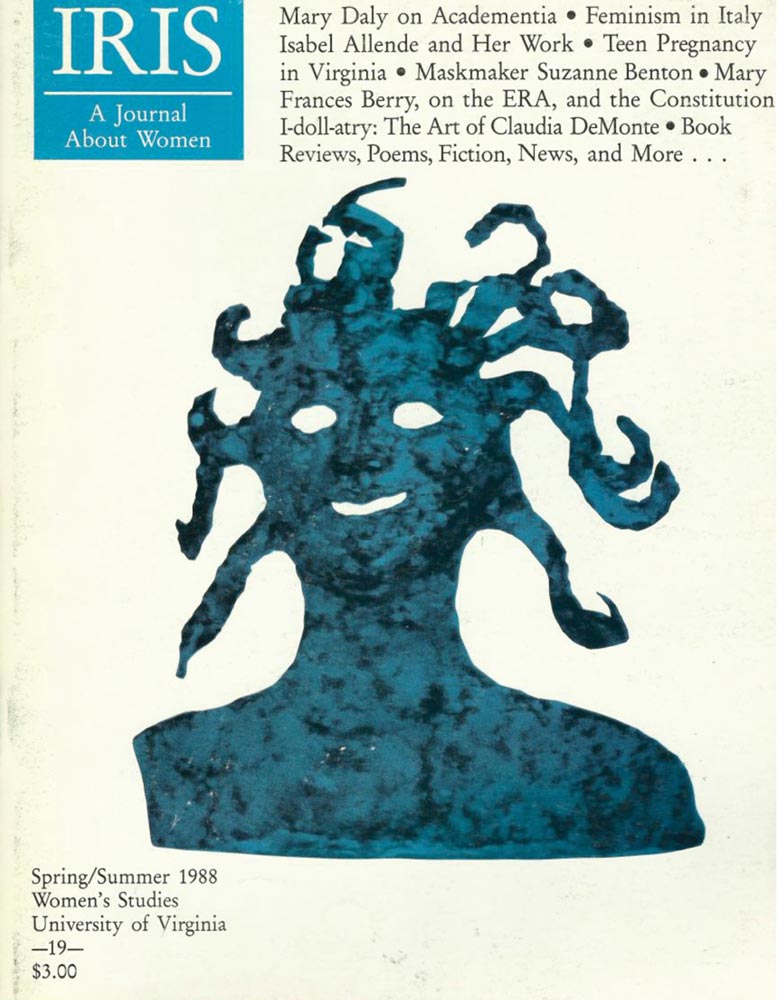
UVA founded the Women’s Studies Program in 1979 and appointed Sharon Davie (Grad ’69, ’72) its director. The program ran faculty development seminars in women’s studies and launched Iris: A Journal About Women. In 1989, at the recommendation of the Task Force on Women, initiated by President Robert M. O’Neill, the Women Studies Program split into the academic program and the Women’s Center, which provides services to students. In 1990, Ann J. Lane became director of the academic program, now a major, and the first UVA student graduated in the field of women’s studies.
Glynn Key
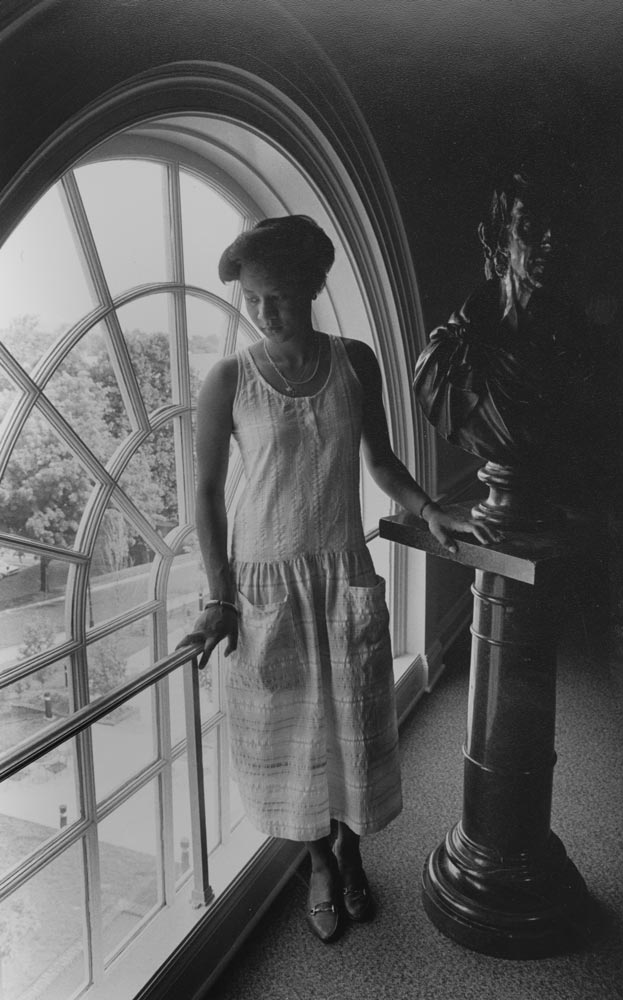
One afternoon, when Glynn Key (Col ’86, Law ’89) and two female friends were chatting outside Key’s Lawn room, they witnessed a rowdy football player throw a piece of firewood through one of the Pavilion windows. Key and her friends chased the player, tackled him and kept him at bay while one of the women ran to call the police. “I heard later that the coach kicked him off the team,” says Key. “He would have normally been suspended, but he was kicked off because the coach didn’t like that he was tackled by three girls.”
As a student, Key was dedicated to academics and extracurricular activities; she was a Jefferson Scholar, the chairman of the Honor Committee, and a member of Delta Sigma Theta, a predominately black sorority. Key later became the president of the Alumni Association’s Board of Managers and a member of UVA’s Board of Visitors. “I consider myself very competitive, and I think that was something that was nurtured at Virginia. I had a desire to do the best at whatever it was,” she says.
As an African-American woman, she found UVA’s community to be supportive of her desire to excel. As the chairman of the Honor Committee, she says that other concerns were far more pressing than race or gender. “It was a larger issue of the gravity of the single sanction system and what you had to learn about yourself and other people,” she says.
From the moment she arrived at the University, Key appreciated the benefits of a large, vibrant community. “I think UVA is a place where you’re able to be exposed to things that are new,” she says. “You are allowed to bring yourself into traditions at the University, whether as a woman or as a minority. To me, it’s a collection of communities that are centered around core values.”
Still, Key, who now is general counsel for General Electric, recognizes that she and her peers were often pioneers. “I would bet that of the women who graduated in the ’80s, you’ll find out that they were the first minorities to hold certain positions in their fields.”
Alexandra Arriaga
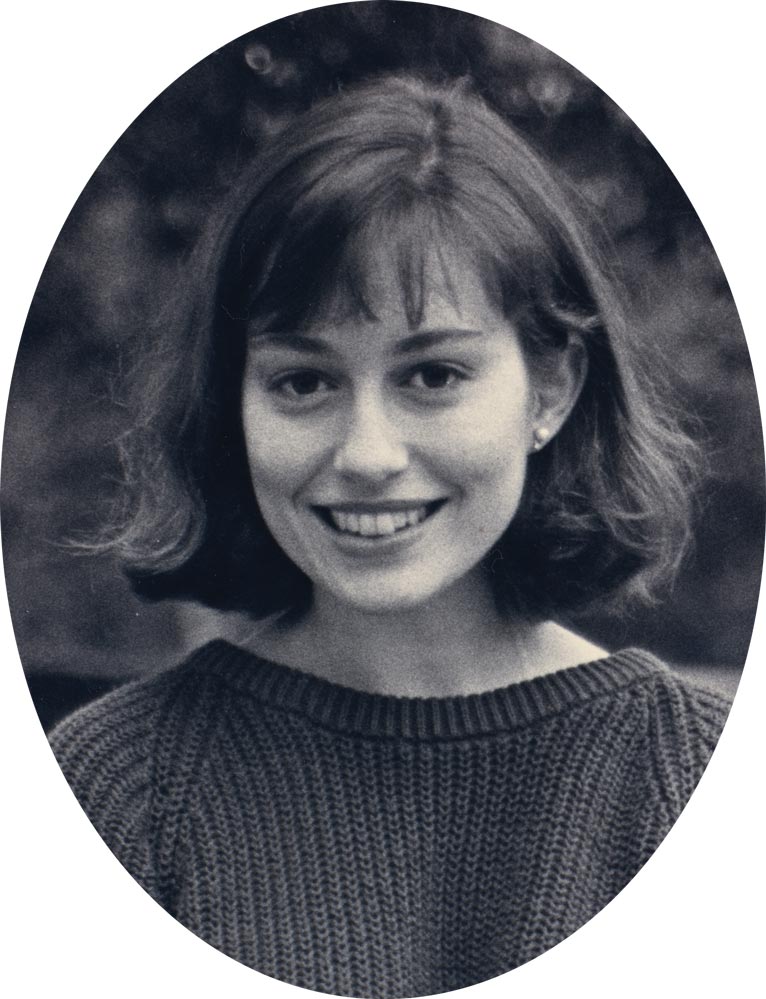
“You are not girls, you are women!” Sybil Todd, associate dean of students, told Alexandra Arriaga (Col ’87) and her fellow undergraduate women.
The point was well made. “She made it clear that our contributions were important and valid, that we had something to bring to the table,” says Arriaga. “Coming of age in the ’80s, we were building on all the work that had been done by women in the ’60s and ’70s. Often, women of my generation were the first women to work the jobs that we worked. We were affirming hard-won rights and making them into realities.”
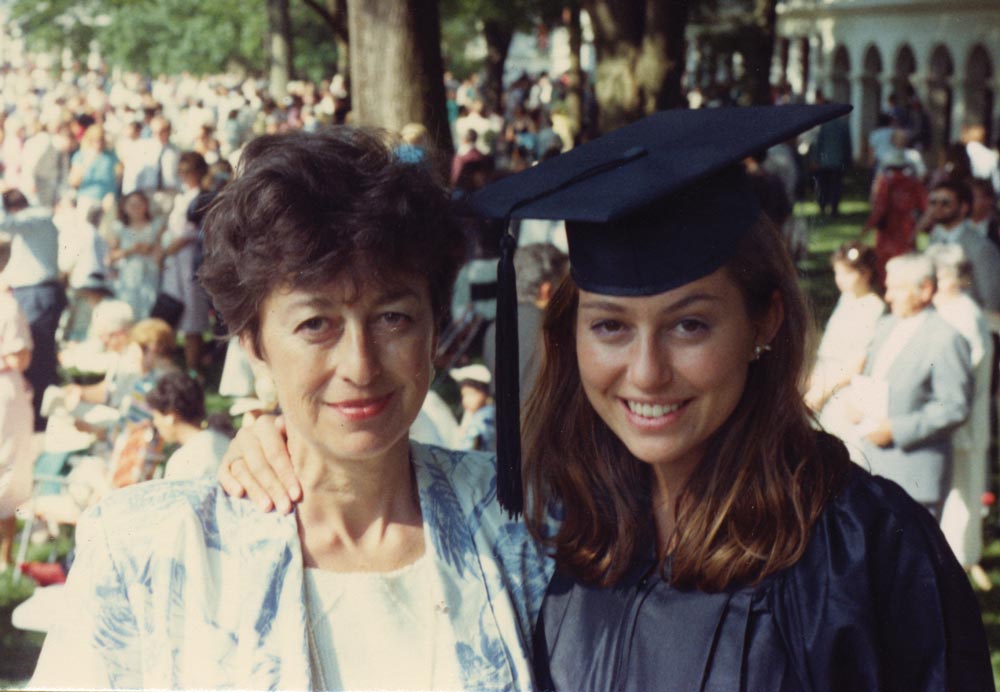
Arriaga majored in Latin American studies and participated in the Honor Committee on Grounds. “My peers were other women who had studied really hard in high school, so I felt I fit in,” Arriaga says. “There weren’t many people who had an international background and I didn’t self-identify as a minority.”
Arriaga’s parents were both immigrants to the U.S., her father from Spain growing up in Argentina and her mother from Chile, and the family spent time in Chile during Arriaga’s teen years. “We were there a few years after the military coup. I remember the riots, the curfew and how people fighting for free and open voting were mistreated.” These experiences brought to her attention the importance of human rights. “I became more aware of the disparities and appreciative of the freedom enjoyed in the U.S.,” she says.
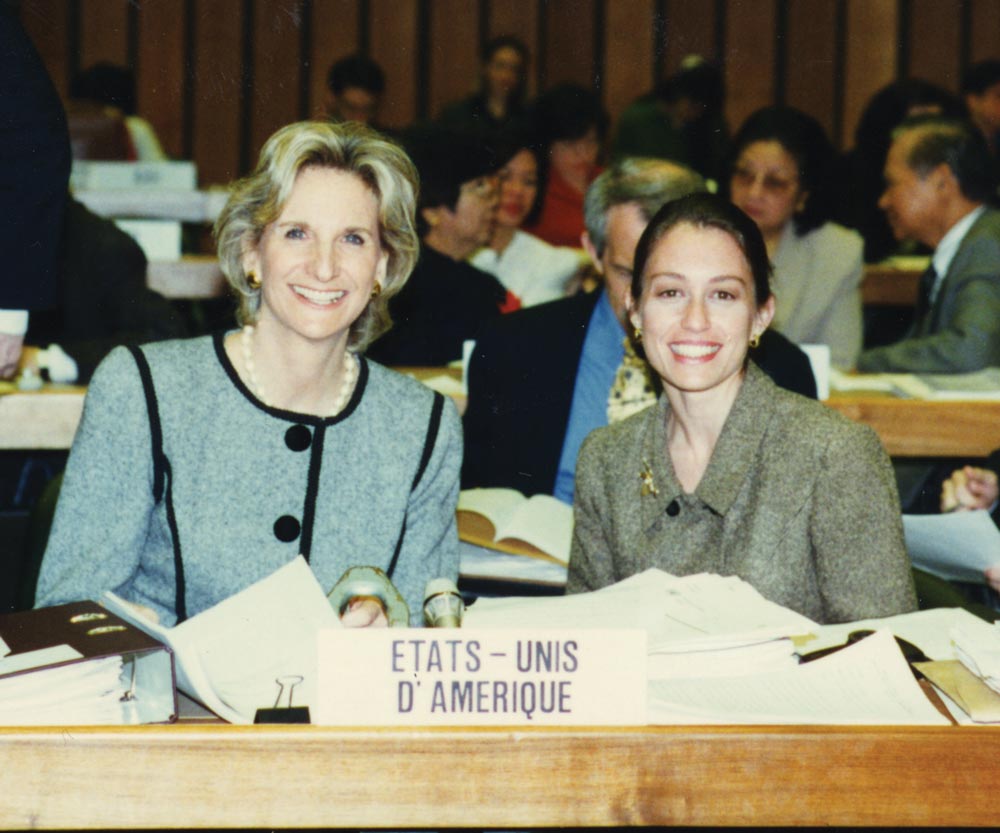
After graduation, she worked and volunteered in Washington, D.C., quickly rising to become director of the Congressional Human Rights Caucus. In 1995, Arriaga worked for the State Department as a senior adviser to the assistant secretary of state for democracy, human rights and labor. Arriaga was a delegate to the U.N. Commission on Human Rights and led the bureau’s Working Group on Women’s Human Rights. “Focusing on women’s human rights, you learn that where women are respected democracy has a far greater chance at success. What is good for women is good for everyone,” says Arriaga.
After two years in the White House during the Clinton administration as a special assistant to the president, she worked for Amnesty International USA, then started a consulting firm. In all of her jobs Arriaga has traveled extensively, visiting more than 40 countries. “Many times I was the only woman in the room.”
Arriaga will receive the UVA 2011 Distinguished Alumna Award.
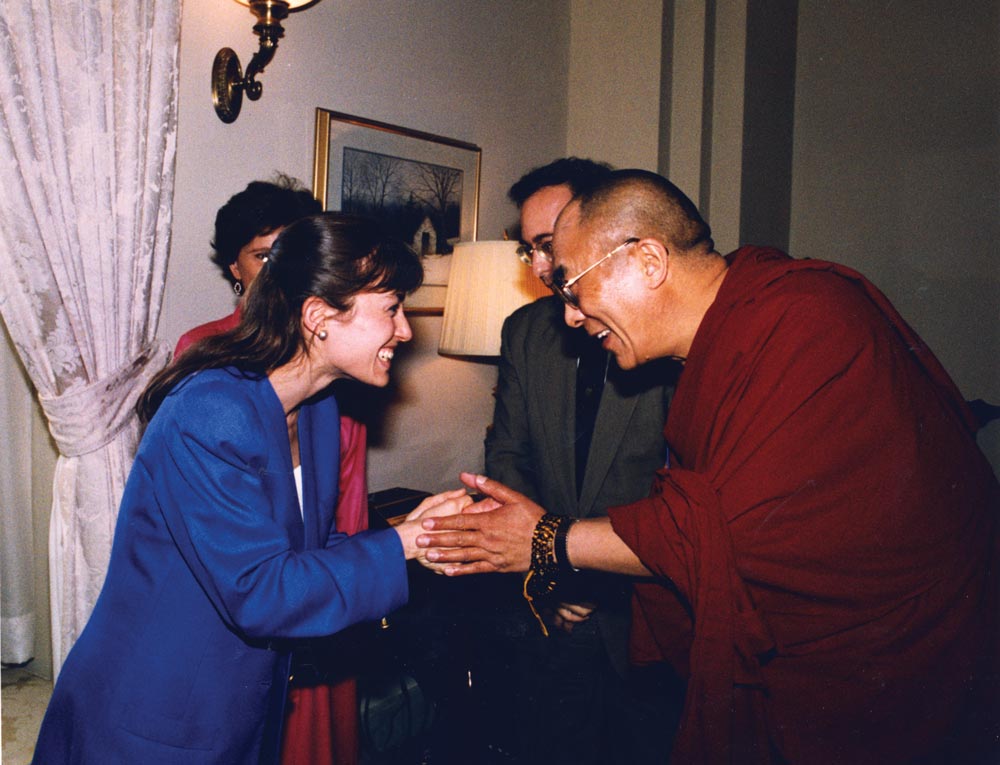
Melissa Stark Lilley
Some of Melissa Stark Lilley’s best memories are of sitting in the student section of Scott Stadium watching football games. “I’ve always loved the ambiance around sports: the camaraderie, the ritual, everyone coming together with a shared desire to win,” says Lilley (Col ’95). She wasn’t just a spectator for long; she became a production assistant and reporter for Virginia Basketball with Jeff Jones and Virginia Football with George Welsh, where she profiled players and covered games. “It was a good time for UVA sports. Men’s soccer won national championships and women’s lacrosse won the NCAA championship twice,” she says.

After she graduated, Lilley took samples of her work for UVA athletics to news and sports directors and got a job covering sports in Washington, D.C., and Baltimore for Fox. Next she was hired by ESPN as a SportsCenter reporter and occasionally anchored for ESPN news. When she was 26, she got the job for which she is best known—as a sideline reporter for Monday Night Football. “There weren’t a lot of women in sports journalism,” says Lilley. “There were a few who came before me, but it was still rare.
“Among the athletes, there were a few of the old guard who felt uncomfortable with women talking to them about sports,” says Lilley. “Jack Nicklaus once said something to me to that effect, but the younger athletes, like Sergio Garcia, know that times have changed.”
After a few years as a correspondent for the Today Show and covering three Olympics, Lilley decided to care for her four children full time. “These children and my family are my real legacy,” she says. “When people talk about the impossibility of having it all, I’m not sure what that means. For me, this is having it all.”

Mary Elizabeth Bruce
Mary Elizabeth Bruce’s real education began not at her high school in suburban Ohio or even her first year at UVA, but in an elementary school classroom in Washington, D.C. She spent a year before college working with AmeriCorps in inner-city schools plagued by poverty. “Some of the 10-year-olds that I knew wouldn’t graduate from high school. Some would be victims of violence and wouldn’t even see their 18th birthdays,” Bruce (Col ’04) says. “I knew that I wanted to study something that would help me address these very real problems.”
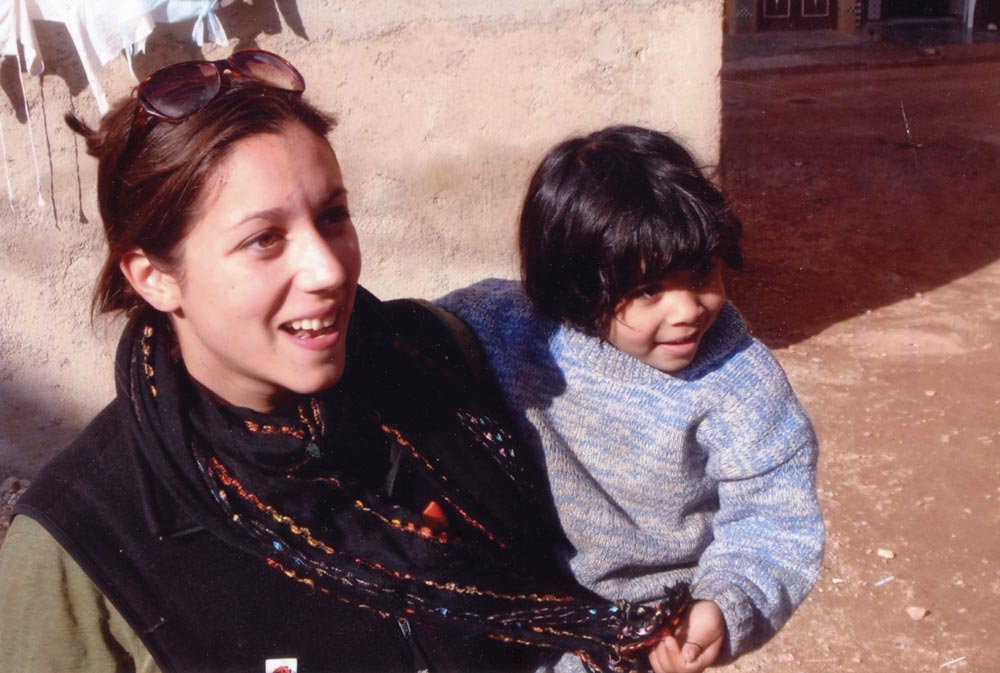
Bruce arrived at UVA with clear academic goals around which she built a curriculum that dealt with social and economic inequality related to race, gender and poverty. “Econ 101 didn’t resonate with what I’d been working on,” says Bruce. With the support of the Center for Undergraduate Excellence and mentor Professor Wende Elizabeth Marshall, Bruce earned her degree in a new interdisciplinary field, poverty studies.
Bruce was the co-president of the UVA chapter of the National Organization for Women and chair of the Minority Rights Coalition. “Being a white woman in that position was a unique challenge that year where there were conflicts on Grounds related to race and identity,” says Bruce. “A student running for president of student council was assaulted; a graduate student was murdered in her home in an incident of domestic violence; students protested the Cavalier Daily for its portrayal of race issues on Grounds.” In response to these issues, the Minority Rights Coalition helped found Kaleidoscope, a center for cultural fluency at Newcomb Hall, which invites speakers on multiculturalism and provides other diversity-related resources to students.
Bruce helped organize Take Back the Night, an annual march intended to bring light to issues related to domestic violence. “I felt very conscious of what it means to be a woman in our culture; it was a big part of my day-to-day identity,” she says. Bruce worked with the Women’s Center to educate about the role of women leaders at UVA. She started a women’s running club. She worked to provide resources for women on Grounds. “We had a mechanic come and talk to us about fixing cars. It was information our boyfriends knew and we needed to know,” says Bruce.
“One of the biggest challenges for women in the U.S. remains economic inequality. It is still true that a woman graduating from UVA will be paid less than her male counterpart,” says Bruce. “Improving the situation of women will lead the way to a fairer society, healthier children—the list goes on.”
After graduation, Bruce joined the Peace Corps and went to Morocco where she worked at a youth center. Her 27 months in Morocco revealed a different role for women than in the U.S. “One of the smartest girls I tutored was withdrawn from school by her parents because she’d been engaged to marry,” says Bruce. “It was incredibly frustrating to see her opportunities just taken away.”
Bruce continues her work in education with Raising A Reader MA, a Massachusetts affiliate of the national non-profit that promotes children’s literacy in low-income communities. “Children who are provided the tools and resources they need to develop early literacy skills to enter school ready to learn are more likely to graduate from high school, to go to college and to get good jobs.”
Irene Kan
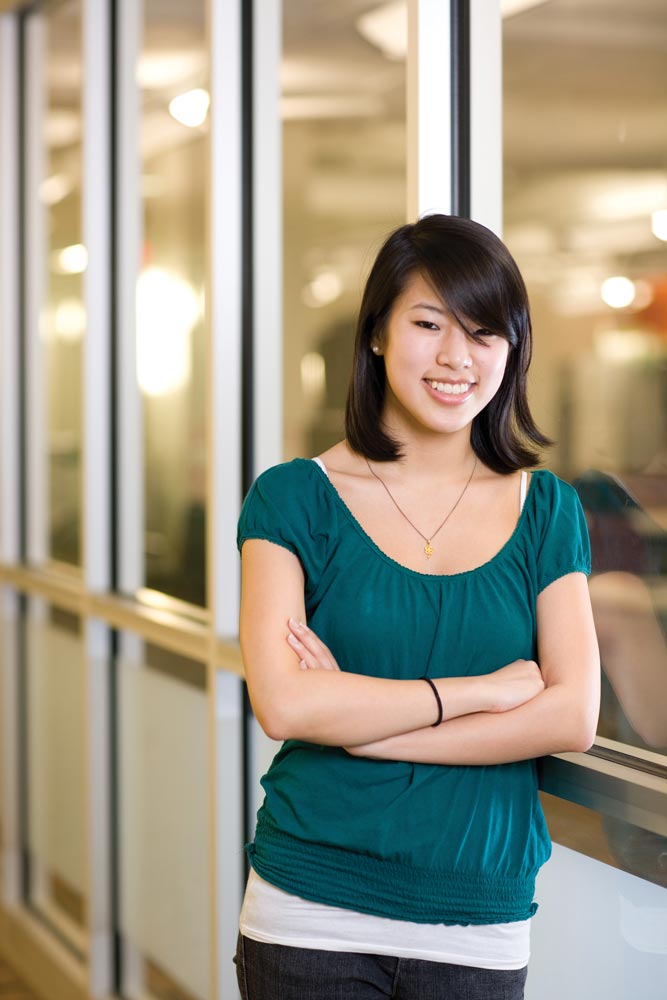
Irene Kan (Col ’11) spends 60 hours a week in the offices of the Cavalier Daily, where she is managing editor. Between classes, she edits news content and tracks assignments to writers and photographers. “At night, we write headlines and do page OKs before we send the finals to the printer for a 1:15 a.m. deadline,” she says. “A courier distributes the paper on Grounds at 5 a.m. and by 8 a.m. the next day the whole cycle starts again.”
Kan’s studies in comparative literature and political science complement the newspaper job. “Certainly, the classroom is a level playing field,” says Kan. “I don’t think that gender has any impact on my academic experience.” She mentions that the English department, like many at the University, has more female than male students. “There are some brilliant women in my classes. My classmate Laura Nelson was just awarded a Rhodes Scholarship.”
Yet Kan says she was surprised to learn how prevalent traditional gender roles are among some of her classmates. “I took a class about biology and gender difference. Discussions revealed that some girls in my class thought of their time at the University as a way to get their ‘Mrs. Degree’ and become full-time homemakers. I don’t know any guys who say that.”
Her work with the newspaper brings Kan face to face with controversy and tragedy at the University. Last May, Kan went into the office despite the production hiatus of the Cavalier Daily for finals because she’d heard the news of Yeardley Love’s death. “I had no staff and missed the last day of my classes. I was on the phone all day dealing with rumors and trying to make sense of what had happened.”
The tragedy brought national attention to the University and raised concerns about women’s safety. Both the administration and student groups have worked to address these concerns. Kan and other members of her sorority, Sigma Psi Zeta, educate students about domestic violence and hold self-defense classes. Kan says, “Love was a strong person—I hope that we are all inspired by her to stand up for ourselves and for each other.”
